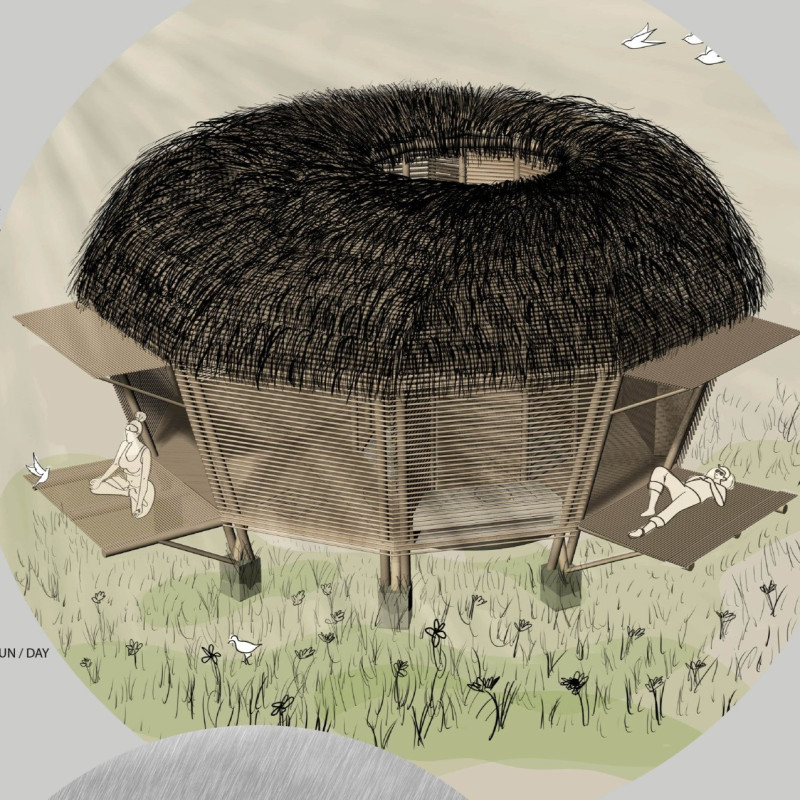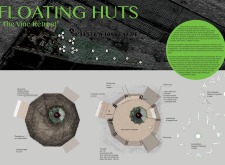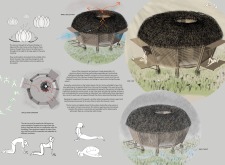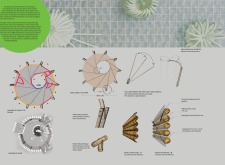5 key facts about this project
The Floating Huts at The Vine Retreat are designed to provide a peaceful environment that connects visitors with nature. Located at geographic coordinates 10°33'57.6"N, 104°21′42.7″E, these huts focus on wellness and meditation. The design uses round shapes and open spaces. These features promote light and air movement and foster a sense of calmness, providing a retreat from everyday life.
Structure and Layout
The huts are elevated on stilts, standing 0.50 meters high. This design protects them from flooding during heavy rains while allowing for views of the landscape. They feature an open patio that blends inside and outside living. Amenities like an outdoor shower and central fire lamp add to the experience, inviting residents to engage with the surroundings.
Functional Adaptability
Adaptability is key in the design. The huts can expand during hotter months, allowing for different activities at once. The interior layout includes flexible spaces that can accommodate futons and meditation areas. This thoughtful arrangement promotes mindfulness and relaxation by making it easy to connect with nature daily.
Materiality
Bamboo is the primary construction material, chosen for its strength and environmental benefits. The walls use bamboo panels that provide privacy while allowing light to enter. The roofs are made from thatched materials or coconut leaves, which offer effective weather protection and insulation suited for a tropical climate.
Design Details
Natural elements enhance the living experience, with climbing vines wrapping around outdoor areas. This greenery not only boosts the aesthetic appeal but also immerses residents in their lush surroundings. Additional features like rainwater collection and biosand filters underline a commitment to environmental sustainability. The huts function well within their ecosystem, creating a unique experience for all who visit.






















































